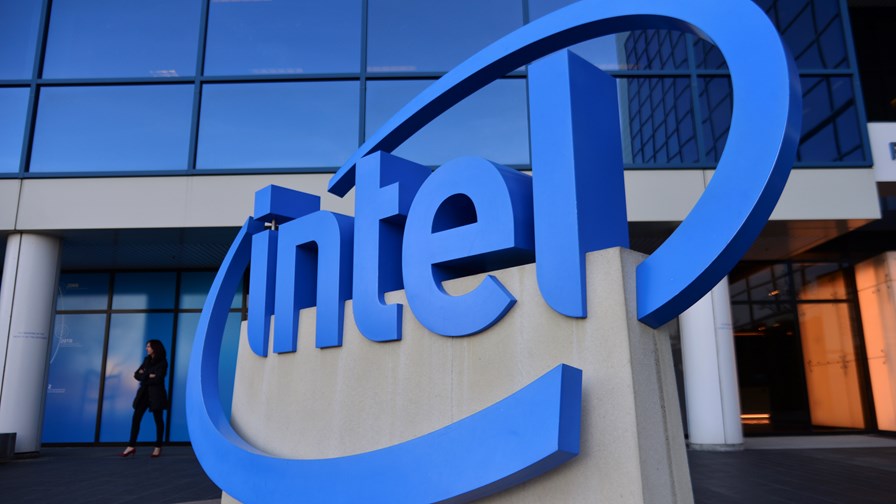
- Overall, up to eight facilities to be built, with construction to begin early in 2022
- Belgium, France, Germany and the Netherlands on shortlist for the first factory
- Part of a strategy to counter Chinese expansion in, and exportation of, 14nm chips
- EU policy is to produce 20 per cent of global chip output by 2030
As the jostling for global semiconductor production power intensifies, with China looking to play an increasingly influential role, Intel is spreading its wings and seeking to lay down roots in key areas of demand.
China is doubling down on efforts to not only make itself self-sufficient in the mass production of leading-edge microchips for its huge domestic market, but also to try to achieve silicon hegemony in as much of the rest of the world as possible by making county after country dependent on China for their chip supplies, whether they come already embedded in devices or in their native state for inclusion into locally manufactured products.
The current focus is on manufacturing billions of 14 nanometre (nm) chips over the course of 2022. China is already globally proficient in 28nm chip technology and is absolutely determined to cash-in on 14nm semiconductors. That’s because, among other sectors, they are vital to the lucrative 5G equipment and devices and to the emerging AIoT market (a marriage of AI-enabled and empowered IoT on a massive scale).
Well aware of the potential deleterious economic, social and military impacts the Chinese ambitions may prefigure, the US, the UK, Canada, Europe and other nations (that are always referred to in shorthand as “The West” even those those counties include Australia Japan, New Zealand and, it seems increasingly likely, India) are seeking to counter Chinese technological expansionism but also to make themselves self-sufficient in chip R&D and manufacture and thus able to dominate their home markets whilst competing head-on with China in developing economies.
Hence the news that Intel is to invest US$20 billion over 10 years in constructing semiconductor fabrication plants (fabs) and other supporting facilities across Europe. If successful, in due course, the building spree will continue, and the value of Intel’s investment could rise to $100 billion in the long-term.
The political importance of the Intel initiative should not be under-estimated. The company’s CEO, Pat Gelsinger, has visited several European countries to sound out various governments about to the worsening problems in the semiconductor supply chain, which Mr. Gelsinger says, rather than just being just a sort-term glitch, will, in fact, last for several years. Among the countries included in his tour were Belgium, France, Italy, Germany, Ireland, the Netherlands and the UK.
$20 billion investment is undeniably massive but Intel angling for an €8 billion EU subsidy
It is EU policy to step up semiconductor production to 20 per cent of global output by 2030 (it’s half that today) and Intel is keen to get a slice of the action, hence the plans to invest so much money. That said, the $20 billion investment figure will be offset by subsidies: Gelsinger has made it plain that Intel is seeking €8 billion (currently the equivalent of $9.45 billion) to “balance” the fact that it costs more to manufacture chips in Europe than it does in places such as the Far East and Asia.
In a statement, an Intel spokesperson said, “Government incentives will play a significant role in accelerating and expanding our investment plans around the world. Currently it can cost 30 per cent more to operate a fab in Europe or the US compared to Asia. Also important is access to a diverse workforce, robust supplier ecosystem and reliable infrastructure. We are considering many locations and plan to announce our next phase of expansions in the US, Europe, and other global locations within the year.”
Intel intends soon to build at least one European fab and another for advanced packaging, with Belgium, France, Germany and the Netherlands on the short list as first construction sites. A decision on which country (or countries) will be chosen will be made later in the year. Overall, it is expected that eight fabrication plants will be constructed in Europe over the next five to eight years.
The CEO made Intel’s intentions explicit but was short on detail, merely saying, “We plan to expand to other locations in the US and Europe, ensuring a sustainable and secure semiconductor supply chain for the world.” Nonetheless, it is evident that the strategy is to cut Chinese semiconductors off at the pass and keep as many as possible out of Europe and North America.
Back on its home turf, Intel is investing a further $20 billion on a 3D-packaging semiconductor facility in New Mexico.
Email Newsletters
Sign up to receive TelecomTV's top news and videos, plus exclusive subscriber-only content direct to your inbox.




